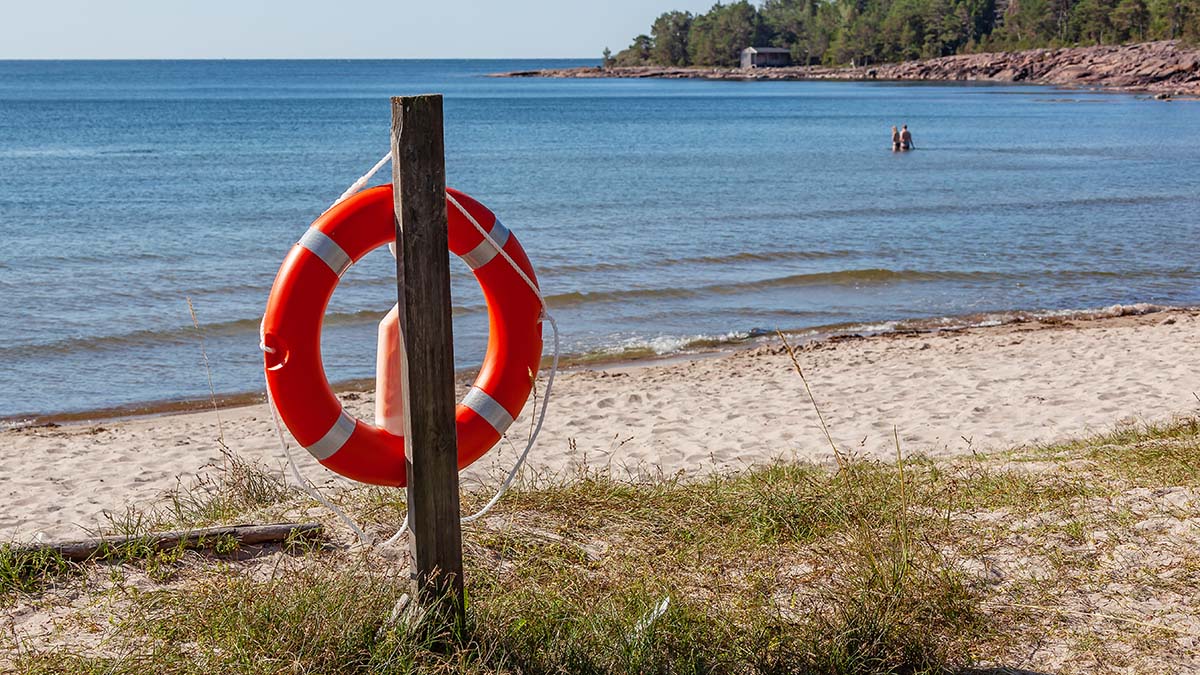Authorities consider means to improve safety at swimming areas

During the summer, there have been significantly more drownings and serious near misses than usual at public swimming areas. The Ministry of the Interior, the Finnish Safety and Chemicals Agency (Tukes), the National Police Board of Finland and the Finnish Swimming Teaching and Lifesaving Federation met on 30 July to discuss safety at swimming areas.
The meeting discussed the monitoring of swimming areas, developments in recent years in the light of statistics, ongoing development activities and how measures and monitoring could be made more effective.
“The authorities are seriously examining safety at swimming areas and the deterioration of water safety skills, and we are concerned about the trend. What is needed now is more efficient cross-administrative cooperation to remedy the situation,” says Kimmo Kohvakka, Director General for Rescue Services at the Ministry of the Interior.
“Service providers are responsible for ensuring that safety arrangements are in place at swimming areas. Each of us, however, is always responsible for the safety of our own actions. A lifeguard is not a babysitter – the responsibility for children always lies with their carers. The exceptionally high number of drownings at swimming areas this summer shows that there is no room for indifference in water safety,” says Tomi Lounema, Director General of the Finnish Safety and Chemicals Agency.
Parents are still responsible for their children at swimming areas
Overall, according to preliminary statistics, 32 people have drowned in Finland so far in June–July, compared with 40 drownings in the entire June–July period last year. In recent summers, an average of around five people have drowned at swimming areas. This summer, 14 people have already drowned at public swimming areas.
In addition, there have been too many near-miss situations at swimming areas, where the quick action of lifeguards and bystanders, and in some cases resuscitation skills, have saved lives.
“Swimming teaching and swimming skills, particularly of children, generally deteriorated during the break caused by the coronavirus years. In recent years, the majority of drowning victims have been native Finns and a fraction have been of immigrant origin. In light of the events of recent weeks, however, it is also worth considering measures aimed at the immigrant population, such as increasing awareness among parents,” says Anne Hiltunen, Water Safety Specialist at the Finnish Swimming Teaching and Lifesaving Federation.
“Parents have a responsibility to make sure that their children are safe and that their lives are not in danger when at swimming areas and near water. It is also important to use the necessary safety equipment and to comply with the rules for the use and organisation of swimming areas. Swimming is a good skill both for recreation and in difficult situations. But if you can’t swim, stay near the shore,” says Chief Superintendent Konsta Arvelin of the National Police Board of Finland.
Agreed development measures must be implemented as planned
Key prevention measures for drownings and water accidents are outlined in the Programme for the Prevention of Home and Leisure Injuries 2021–2030 and the Traffic Safety Strategy 2022-2026.
At the meeting, the authorities stated that it is important to ensure that agreed measures are implemented as planned and to intensify cooperation between the authorities. In addition, there was discussion about how, in addition to general safety education, the various authorities could act as messengers to population groups.
Tukes monitors that service providers comply with the safety requirements for swimming areas. In their own rescue and surveillance activities, the rescue authorities pay attention to the safety of swimming areas and, if necessary, liaise with the operators of beaches or swimming sites, municipalities and Tukes. The Police maintain public order and security and prevent crimes. The Police also maintain water traffic safety and investigate related suspected crimes. The Finnish Swimming Teaching and Lifesaving Federation trains swimming instructors and lifeguards, communicates and educates about moving around on water and ice, and provides advice to various actors.
Inquiries:
Kimmo Kohvakka, Director General for Rescue Services, Ministry of the Interior, tel. +358 295 488 400, [email protected]
Tomi Lounema, Director General, Finnish Safety and Chemicals Agency (Tukes), tel. +358 295 052 291, [email protected]
Janne Niemelä, Head of Unit (Consumer Service Safety), Finnish Safety and Chemicals Agency (Tukes), tel. +358 295 052 153, [email protected]
Konsta Arvelin, Chief Superintendent, National Police Board of Finland, tel. +358 295 481 698, [email protected]
Anne Hiltunen, Water Safety Specialist, Finnish Swimming Teaching and Lifesaving Federation, tel. +358 10 3407 333, [email protected]
Traffic Safety Strategy 2022–2026 (in Finnish)
Tukes' beach safety instructions for service providers
Tukes' shore surveillance tool for assessing the need for surveillance at swimming areas (in Finnish)
Parents are responsible for taking care of their children at swimming areas 18 July | Police
Speed of action and location information are crucial in water rescues | Emergency Response Centre Agency
Ministry of Education press release on a report on improving swimming teaching 28 July (in Finnish).
Information about safety on and near the water – Viisaasti Vesillä (in Finnish)
